Heat lovers rejoice; it’s time to get spicy! This guide on how to grow peppers explores the different varieties, tips on how to grow them from seed or transplant, how to harvest them, and how to use them to make your very own garden pepper hot sauce!
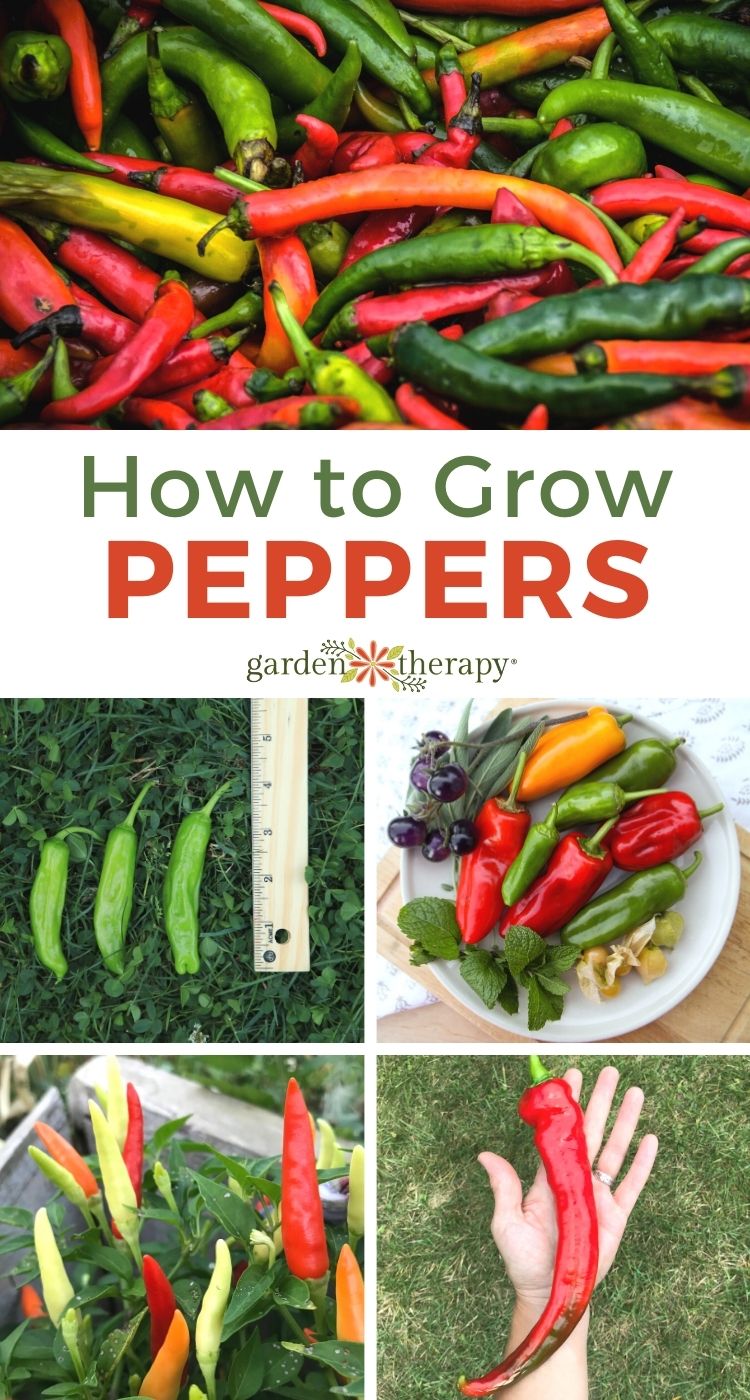
In early summer each year, I wait with anticipation for my trial plants to arrive. What are trial plants, you ask? They are the sneak peek of the new releases in plants for the upcoming year that plant companies send out to gardeners to test in their gardens.
I’m grateful to be on the list for plants from Ball Horticulture, which means I get a box or two of ready-to-plant vegetables. At the end of the season, the trialers send feedback on the plants, and they use that to help send the plants out the following year with the best chance for success in home gardens.
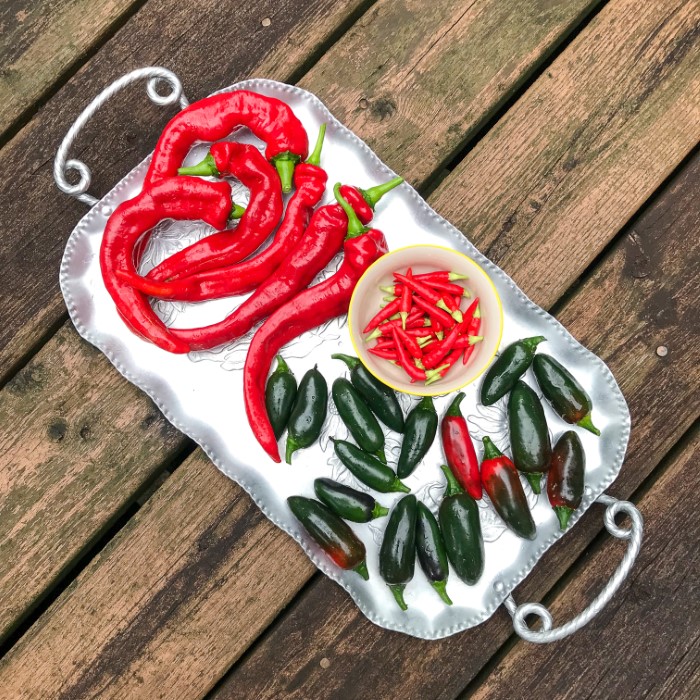
Some of my gardening friends also plant trial plants. My dear friend Tara Nolan, co-owner of Savvy Gardening and author of Raised Bed Revolution and Gardening Your Front Yard, grew the same pepper plants this year, so I asked her to share her experiences growing them. How fun, right?
As a result, this guide on how to grow peppers combines my tips for planting peppers in my zone 7B Vancouver, BC, garden and Tara’s helpful advice from sunny SW Ontario.
This post will cover…
- Expert Tips for Planting Peppers
- The Difference Between Hot Peppers vs Sweet Peppers
- Capsaicin + the Scoville Unit
- How to Use Hot Peppers
- How to Use Sweet Peppers
- How to Grow Peppers from Seed
- 1. Know Your Zone
- 2. Soak in Water Overnight
- 3. Germinate
- 4. Transplant
- How to Grow Peppers from Transplant
- Growing Tips for Perfect Peppers
- Water Correctly
- Use Mulch to Retain Moisture
- Stake
- Keep Peppers Warm
- Proper Companion Planting
- Pepper Plant Harvesting Tips
- How to Increase the Heat of Peppers
- What Peppers Should I Grow?
- Ristra Cayenne II Hot Pepper
- Sriracha Hot Pepper
- Basket of Fire Hot Peppers
- dRAGON rOLL Shishito Peppers
- Jalapeno Sweet Poppers Sweet Pepper
- Where to Plant These Peppers
- Frequently Asked Questions About Growing Peppers
- Make a Garden Pepper Hot Sauce
Expert Tips for Planting Peppers
- The hotter a pepper plant is, the more capsaicin is in it. This is measured using the Scoville scale. Pay attention to this information when you are deciding which peppers you’d like to plant!
- Germinating pepper plants from seed requires you to soak seeds overnight and plant them in warm soil, about 70-80 degrees Fahrenheit.
- Pepper plants should be planted in the ground 2-3 weeks after the last frost. The more sun and heat the pepper plant gets, the hotter the pepper will be.
- Pepper plants need lots of water; mulch can help retain moisture. Peppers may also need staking to stay upright as they get bigger.
- The more you harvest the peppers, the more the plant will produce. Let some peppers ripen fully while you harvest others early to encourage more peppers.
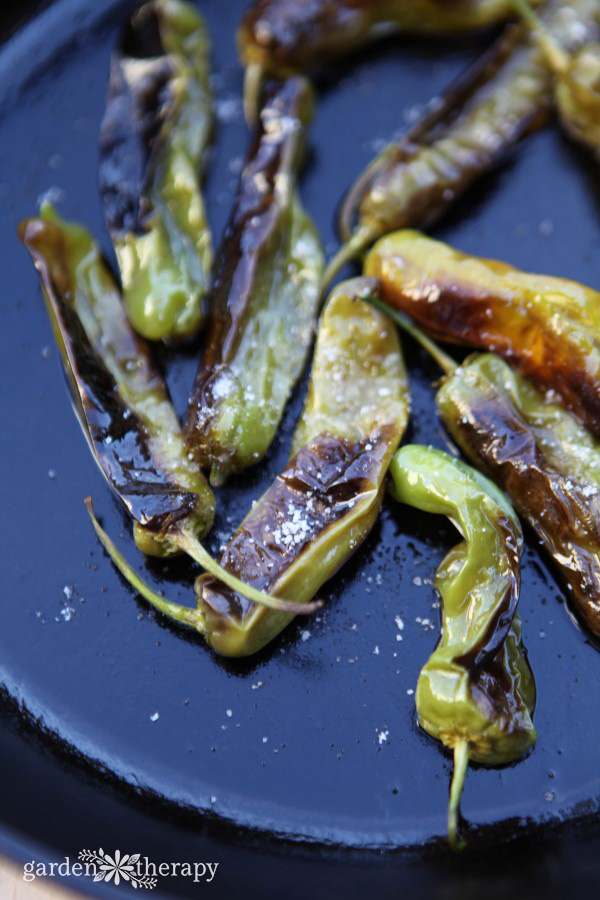
The Difference Between Hot Peppers vs Sweet Peppers
Growing peppers in your garden is a unique way to enjoy the love of spice. With so many varieties available, you can have your very own unique pepper garden. Whether you prefer sweet or spicy peppers, there’s a pepper for everyone.
Botanically speaking, there is no difference between a hot or sweet pepper as both are derived from the species of plant Capsicum in the tomato family. However, our taste buds would disagree. There is certainly a noticeable change when it comes to hot or sweet pepper varieties.
Capsaicin + the Scoville Unit
So what makes certain peppers taste hot? Capsaicin!
Capsaicin is an irritant alkaloid and is what gives hot peppers their spice. The hotter the pepper, the more capsaicin it has in it. In addition, the Scoville scale is used to determine how hot a pepper is. The more Scoville units, the higher the heat.
To give you some perspective, a bell pepper has zero Scoville units, and a jalapeno ranges between 2500 – 8000. The hottest pepper in the world, the Carolina reaper, has 2.2 million Scoville units. Yikes!
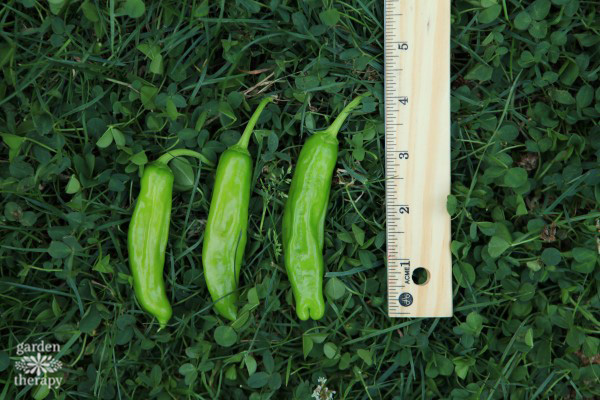
How to Use Hot Peppers
Hot peppers are used in cooking to add zest and heat to recipes. They can be used fresh or dried, both being potent. Hot pepper spices include chili, tobacco, paprika, and cayenne pepper. They can be red or green, depending on the variety.
You can also pickle a hot pepper if you wish!
How to Use Sweet Peppers
Sweet peppers are more often classified as a vegetable. They are used in dishes like salads, for dipping, as an hors d’oeuvre, in sandwiches, on pizzas, and more. They are enjoyed raw or cooked.
The most well-known sweet peppers are bell and banana, but there are plenty of specialty peppers out there for the at-home chef to use.

How to Grow Peppers from Seed
Learning how to grow peppers from seed requires some patience, but it is fairly simple overall. Here are some things to keep in mind:
1. Know Your Zone
Only people who live in the deep southern regions should attempt to plant seeds straight in the ground. For most of us folks, we must sow them indoors for 8-10 weeks before planting them in the garden or outdoor container. Depending on where you live, plant them in the ground 2-3 weeks after the last frost.
Read more about how to grow peppers from seed here.
2. Soak in Water Overnight
Before you plant your seeds, soak them in water overnight.
Once soaked, place them into seed-starting soil. You can use pellets or try your own DIY method. Plant three seeds per pod to give you better chances of a sprout in a hole that is 1/4″ deep.
3. Germinate
Most sprouts should take about a week to germinate at a temperature between 70-80 degrees F, but it can be spotty based on the variety. Hot peppers tend to be more finicky.
If you are trying to germinate a hot pepper seed, it will need more warmth and moisture than a sweet pepper. Spritz the soil and consider placing your seeds on top of somewhere warm, like a heating mat or even on top of the refrigerator. I also suggest using a greenhouse dome to lock in the moisture.
4. Transplant
Once you have a sprout, remove the plants from the dome and heating mat. Put the pepper in a sunny, southern-facing window until you transplant them. Allow your peppers to sit outside for a couple of days to condition them to their new outdoor environment.
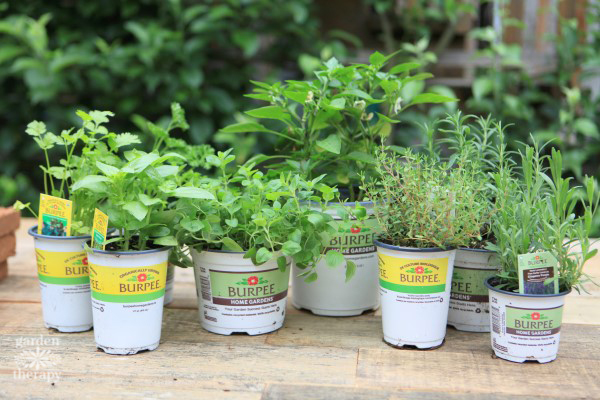
How to Grow Peppers from Transplant
Peppers can take a while to establish and ripen, so planting peppers from healthy transplants is a surefire way to success.
“The plants I received from Burpee were very well-established when I planted them. Because of the hot, sunny weather, all my plants thrived despite the heat and were all laden with peppers. I was able to enjoy multiple harvests.” reported Tara.
My transplants arrived in the same fabulous condition, but our summer was much cooler than Ontario, so when Tara’s peppers were red and ready to pick, mine were still happily green and taking their time.
If you want the best chance for beautifully ripe peppers, get those healthy transplants in the ground no more than 2-3 weeks after your last frost.
Plant peppers in full sun in sandy loam soil that has lots of organic matter and drains well. I also added worm castings from my worm bin to the planting hole of each pepper.
Depending on the pepper size and your garden’s spacing, plant peppers 12-18 inches apart, with a row spacing of 3 inches. Your peppers will respond well to dense planting!
When planting, be sure to soak both the plants and soil with fertilizer drench. After about 30 days, you may want to fertilize them again with a light sprinkling. Be careful not to over-apply nitrogen when using your fertilizer, as this will just make them leafy.
Peppers can also act as ornamentals, so feel free to plant them in flowerbeds and along borders.
Sweet peppers will take approximately 60-90 days to mature, while hot peppers will take around 150 days.
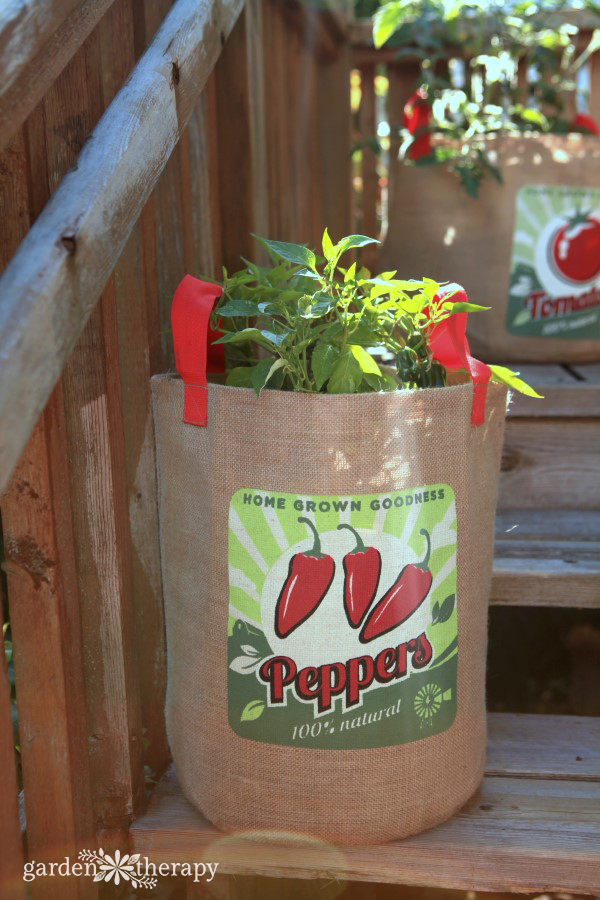
Growing Tips for Perfect Peppers
You can do a few things to give your pepper plant a leg-up in the garden. Here are some quick tips!
Water Correctly
Peppers are thirsty little plants. When watering, use a soaker on the roots and try to keep foliage dry. When it is hot out, the soil must have a high moisture level, but it can’t be water-logged. This will help to fight against wilting and flower drops.
Tara reported back, “Because our summer was very hot and dry, I gave the plants a deep watering every morning.”
Use Mulch to Retain Moisture
Mulch can also help to retain moisture. I mulch around each of the peppers with compost. It will also help keep the weed population down and decrease the need to pull weeds around the plant. Disturbance to the roots of your pepper plant affects peppers’ production.
Stake
Like tomatoes, peppers can get heavy and damaged when they have a lot of fruit. Peppers usually will require staking. Tie the plant to stakes with fabric or old nylons with some give to allow room for growth. Twine or twist-ties will choke the stems.
Keep Peppers Warm
For those who live up north, we want our soil to be as warm as possible for our peppers. A week before planting, cover the bed with cardboard to help to warm up the soil underneath.
Proper Companion Planting
If you do companion planting, peppers do well next to tomatoes, parsley, basil, and carrots. Avoid placing peppers near fennel and kohlrabi.
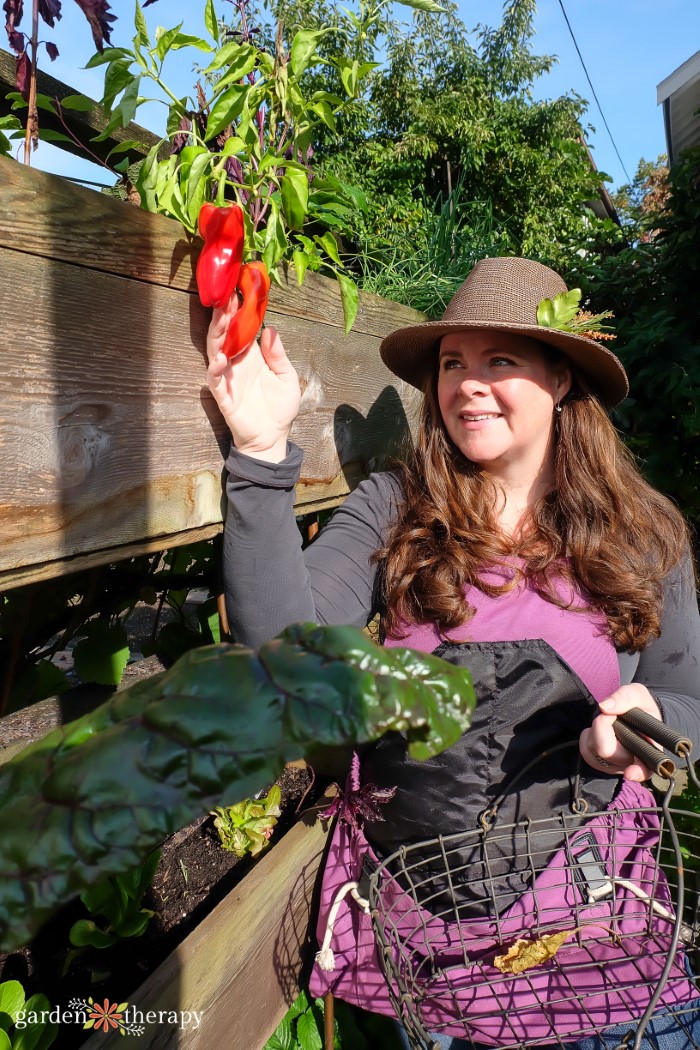
Pepper Plant Harvesting Tips
- Never let your peppers stop growing! If it stops growing, it will affect the production of flower buds. If flower buds drop off, you lose a potential pepper.
- Plan the timing of harvesting carefully. Peppers tend to be harvested before they are mature. However, their flavour doesn’t reach its full potential until maturity. If you pick peppers before they mature, your pepper will produce more peppers to try and seed.
- Plant at least two of the same pepper. Patiently waiting for peppers to ripen fully means you will get fewer peppers and have to wait until late in the season to have any. I suggest planting two of the same pepper variety. Use one to fully ripen and have the best flavour possible, and use the other to harvest throughout the season.
- Be careful with the heat! Finally, if you have a really hot pepper variety, use gloves when harvesting peppers. The capsaicin oil from the peppers can actually burn your skin.
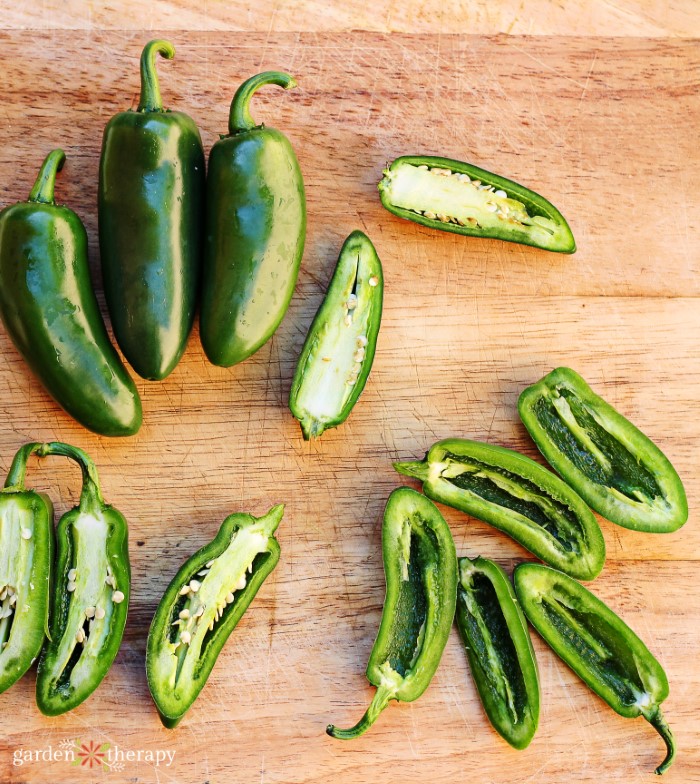
How to Increase the Heat of Peppers
While variety is, of course, the main factor when it comes to a pepper’s heat, you can do a few things to increase the heat of your peppers. Hot climates tend to grow the hottest peppers because the environment plays a factor in the heat of a pepper. I have no doubt that Tara’s peppers were much hotter than mine this year!
To get hotter peppers, you want the plant to experience more heat. The more sun a pepper receives, the hotter the pepper will be. The same can be said for the soil. Well-watered and nitrogen-rich soil won’t be as hot. This is why you want to be careful not to soak your peppers (though keep them moist) and not over-fertilize them.
In colder climates, it is often easier to grow peppers in containers. Grow your peppers in a dark container to maximize the soil’s heat. Growing hot peppers in the garden will significantly reduce the intensity due to the cold nature of the soil.
You can also create heat using an umbrella greenhouse or cloche.
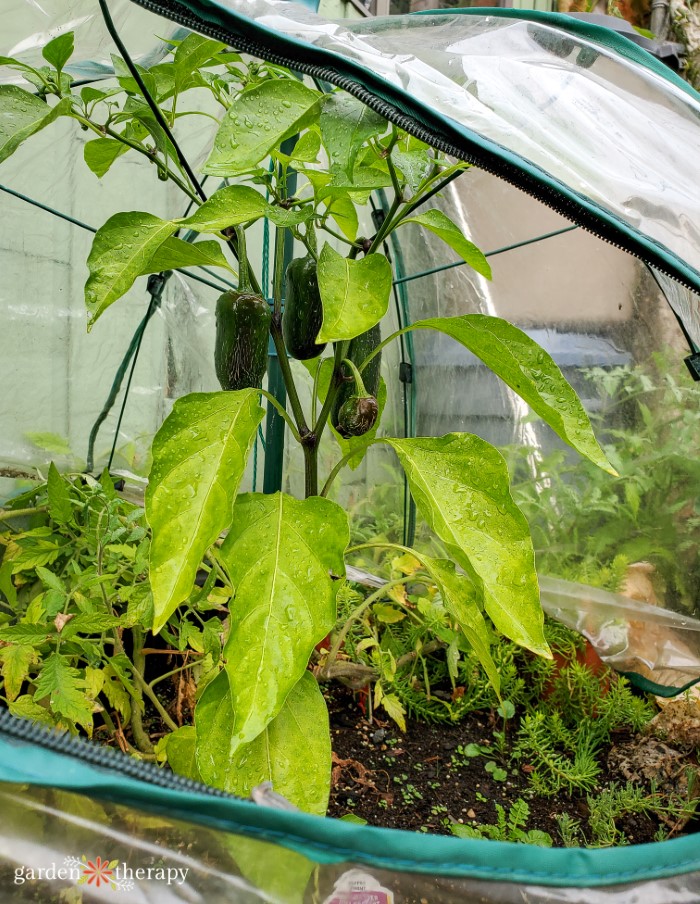
What Peppers Should I Grow?
There are a TON of pepper varieties out there, and the choices sure can be overwhelming. The first thing to determine is what kind of peppers you are looking to grow (hot or sweet) and whether or not you have the right conditions for said peppers.
This year, I grew four different varieties from Burpee Plants in my unique raised bed garden and my VegePod Raised Bed.
Ristra Cayenne II Hot Pepper
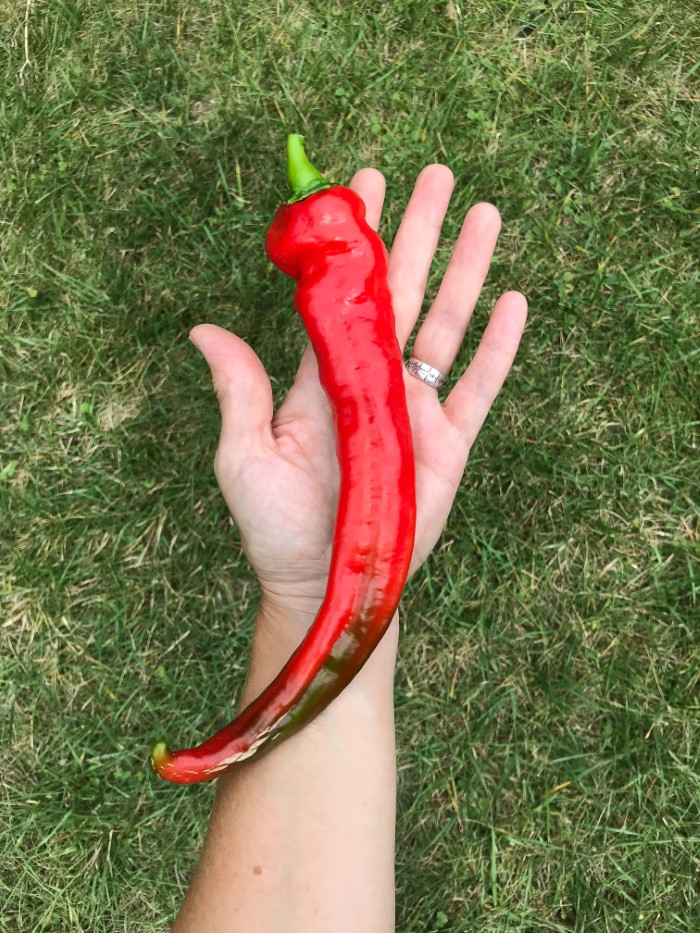
The first variety I have is the Ristra Cayenne II Hot Pepper. This is a little different than their original Ristra Cayenne as it produces more canopy and offers a higher potential for yields.
It offers more peppers per plant and has a mild, spicy flavour. It is great for those who don’t want anything too hot but still want a little bit of spice in their life. My Kiddo loves the look of these long and twisty peppers but stays far away from them, knowing they have a bit of a kick.
- Height: 20-24 inches
- Spread: 18-22 inches
- Days to harvest: 75-90
- Fruit colour: green to red
- Heat level: 🔥🔥
Sriracha Hot Pepper

The next variety is the Sriracha Hot Pepper. Used to make the famous condiment, this slightly spicy pepper is super popular right now…and rightfully so! It is a dark green pepper with smooth skin that scores around 2,300-2,500 Scovilles.
- Height: 18-22 inches
- Spread: 18-20 inches
- Days to harvest: 80-95
- Fruit colour: green to red
- Heat level: 🔥🔥
Basket of Fire Hot Peppers

To satisfy my need for ornamental edibles, I’m giving Basket of Fire Hot Peppers a go this year. As the name suggests, they are a very spicy, compact pepper. They look like typical ornamental peppers, but they are edible! They stand up well to colder weather, too, which is good for me up north.
- Height: 12 inches
- Spread: 24 inches
- Days to harvest: 90-95
- Fruit colour: multi
- Heat level: 🔥🔥🔥🔥
dRAGON rOLL Shishito Peppers

Shishito peppers are one of my absolute favourites to grow, and Kiddo likes them too. Though technically classified as a hot pepper, they’re not that spicy. However, one out of every ten does have a kick so it’s like gambling a bit when you take a bite.
- Height: 24-36 inches
- Spread: 24 to 36 inches
- Days to harvest: 67
- Fruit colour: green
- Heat level: 🔥
Jalapeno Sweet Poppers Sweet Pepper
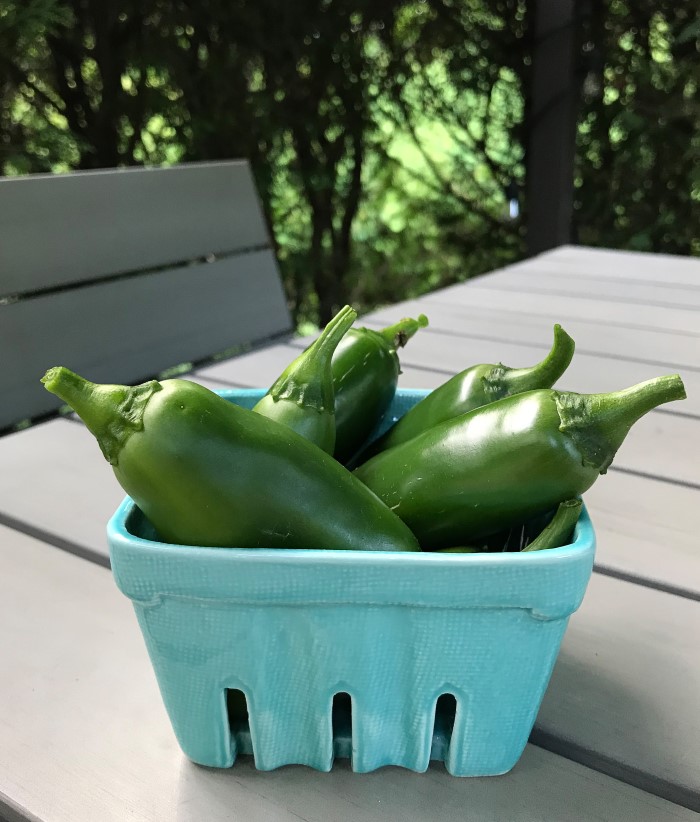
My kid-friendly pepper this year is the Jalapeno Sweet Poppers Sweet Pepper. It isn’t spicy like some of its other jalapeno counterparts. It allows you to get the flavour without any of the heat! This plant is also early to fruit and produces a high yield in nutrient-rich soil.
I made these ones into bacon-wrapped jalapeno poppers (with cream cheese and cheddar), and as it turns out, Tara made them too (although she used goat’s cheese). I wish we could have a taste test!
- Height: 35-40 inches
- Spread: 20 to 24 inches
- Days to harvest: 60-85
- Fruit colour: green to red
- Heat level: none
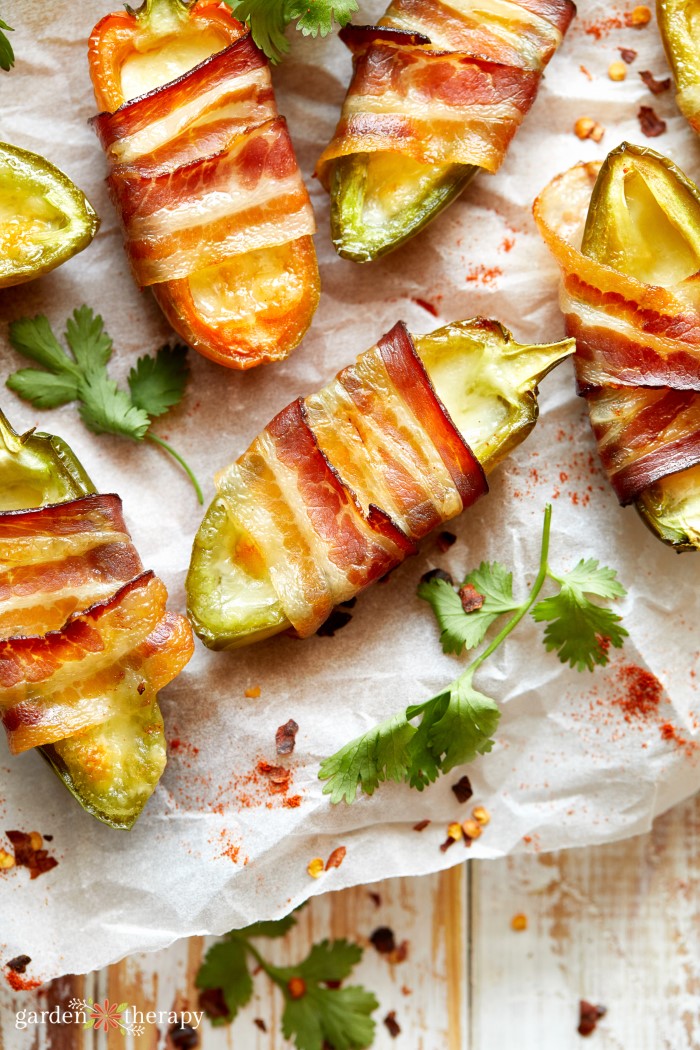
Where to Plant These Peppers
Tara grew these varieties as well, and here is what she had to say about them:
“I planted the Ristra Cayenne II Hot Pepper, Sriracha Hot Pepper and Jalapeno Sweet Poppers Sweet Pepper in my raised bed with benches. This became my “pepper bed,” as I planted a couple of other varieties, as well. They were also so sturdy my cucamelons used the plants as a trellis as their tendrils escaped the actual obelisk I had placed around them.
Basket of Fire was planted in my small live edge raised bed that’s in my new book Gardening Your Front Yard, and it wasn’t long before it was absolutely covered in blooms and, soon after that, peppers. The peppers started as pale yellow, gradually changing to orange and then bright fire engine red. Basket of Fire is so decorative I’m going to plant it in my fall container. “
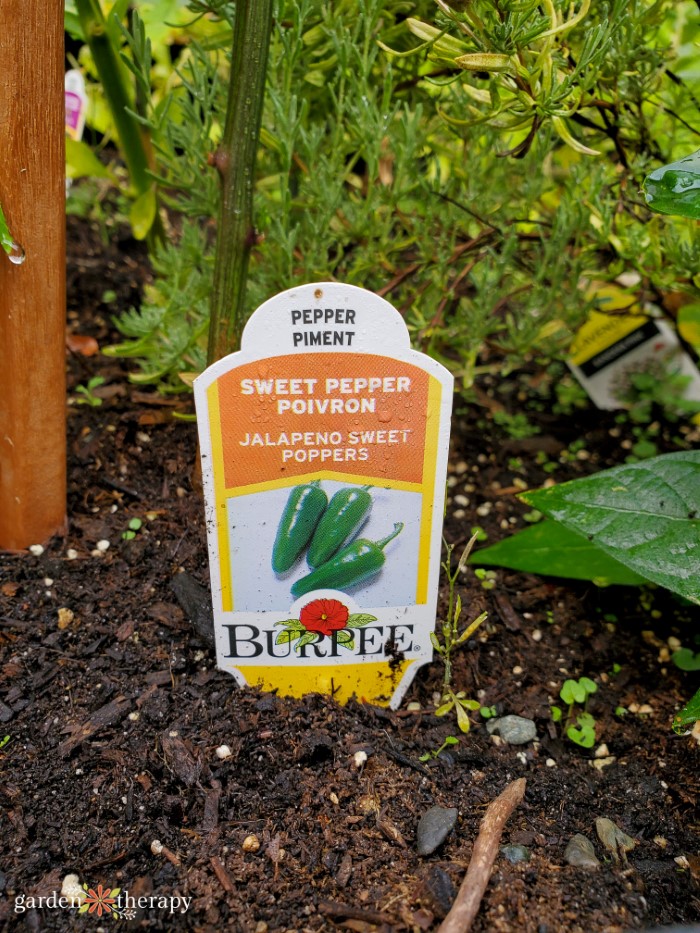
Frequently Asked Questions About Growing Peppers
It depends on where you live. In colder climates, you might actually benefit from growing peppers in pots and containers rather than in the ground. Containers can retain heat better, especially when they’re a dark-coloured pot. When you grow peppers in cold soil, the heat (spice) of the peppers will diminish. Hot peppers grow best in warm climates.
It can take 60-90 days for a sweet pepper to reach maturity and 150 days for hot peppers. I recommend planting two pepper plants of the same variety, allowing one to fully ripen while you munch on the other in the meantime. The more you pick, the more peppers the plant will produce.
Most peppers have a long growing season, so you usually want to start the seeds indoors before the season starts or purchase the plants as starters from the garden centre. Besides timing, your climate may also be a factor. Temperature for starting pepper seeds usually requires a heat mat to reach the desired 70-80 degrees F for germination.
Do not fret if your peppers are turning black. In fact, this means you’re doing something right! Many pepper varieties will turn black before they change to another colour. This is part of their ripening process and is totally normal.
If the pepper looks healthy besides its colour, this is the case. However, other factors, such as fungal infections or root rot, may be at play if you see any shrivelling or rotting.
Yes! There is a chance that it might still grow a few leaves, possibly a flower, and even a pepper. But is that pepper worth the months of nursing that plant back to health? Get another plant and take what you learned from the last pepper to help this one thrive.
Make a Garden Pepper Hot Sauce
This is a great way to use your homegrown peppers! I usually make this pepper hot sauce every year, and it tastes completely different each time! Depending on what peppers you use, the recipe will have its very own flavour, unique to your peppers. It is a fun way to preserve the unique flavour of the peppers you have grown.
This recipe is inspired from The Curious Chickpea’s Hot Sauce Recipe.
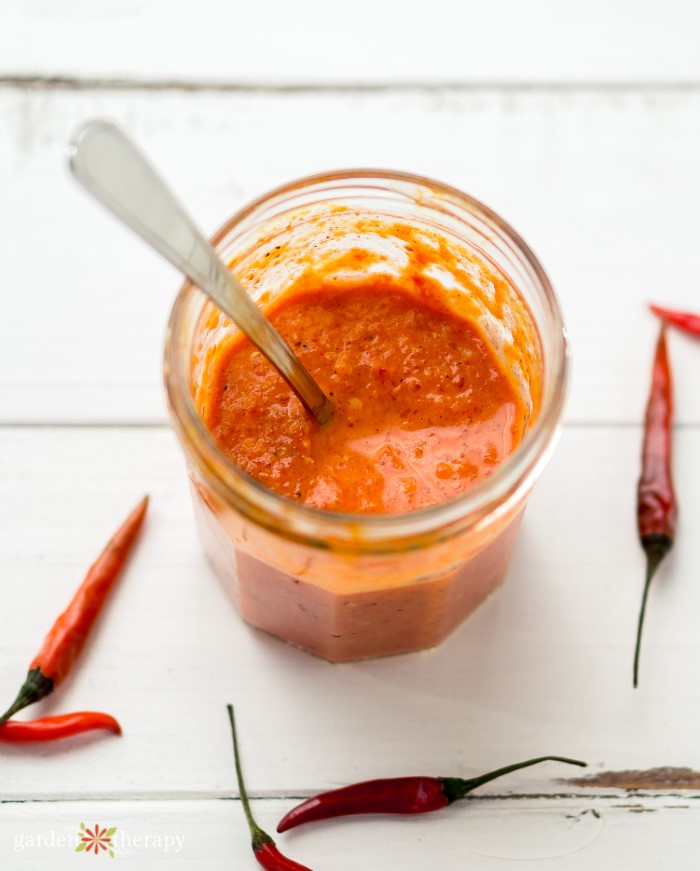
Garden Pepper Hot Sauce
Equipment
- Food processor
- Blender
- Cheesecloth
- Glass container
Ingredients
- 1 ¼ lbs garden peppers
- 6 cloves of garlic
- 1 ½ tbsp coarse kosher salt
- ½ cup water
- ½ cup apple cider vinegar
Instructions
- In a food processor, combine your peppers, garlic, salt, and water. Combine until you have a similar texture to chunky salsa.
- Place your mixture into a dry glass container with a cheesecloth overnight. Let is sit for 24 hours at room temperature.
- Add apple cider vinegar to your mixture and let sit with the cheesecloth for 5-7 days. The longer the better!
- After the full week has passed, blend your mixture until completely smooth. Pour your mixture through a cheesecloth to get out any seeds and such. Squeeze the cheesecloth with gloves to get out all the juices.
- Place your hot sauce in your container of choice and store in the fridge. It should last around several months. Shake before use as separation is normal.


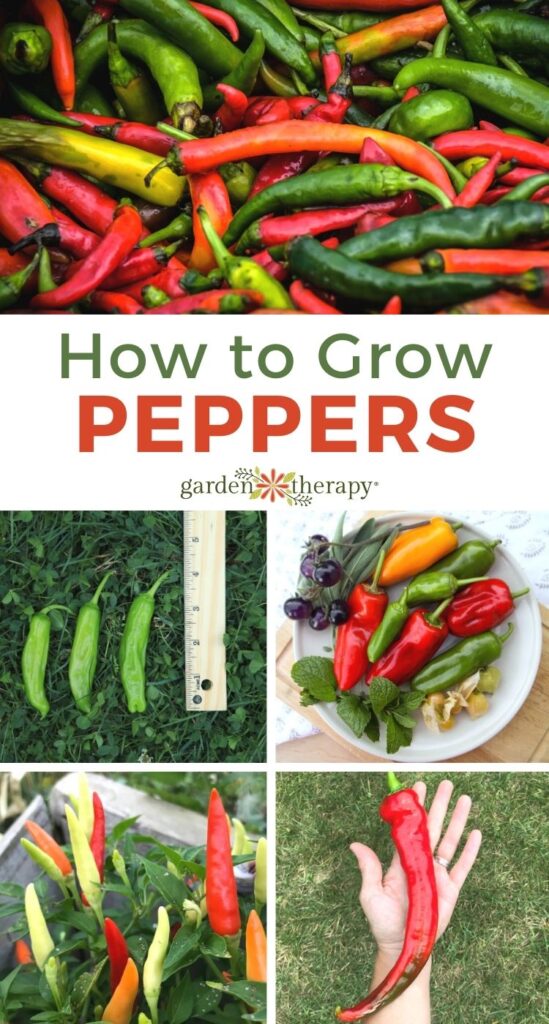



We grow about 60 hot pepper plants this year (this is our average) and we have a hot pepper roaster which adds a wonderful smoky flavor! When we have a total overload, I dehydrate and grind later in a coffee grinder (then I run bread thru the coffee grinder to save for a seasoned bread crumb and store in a zip lock bag or jar for toppings later).
Thank you for this great post! I’ve grown a few bell peppers over the years, and a few years ago, had one jalapeño plant in a pot; I got exactly 2 jalapeños! But your post has made me want to get serious about peppers, and you’ve given me information I really need. It’s late to be planting, but I’m going to try some pots of peppers anyway, and I really want to try srirachas. Thanks again!